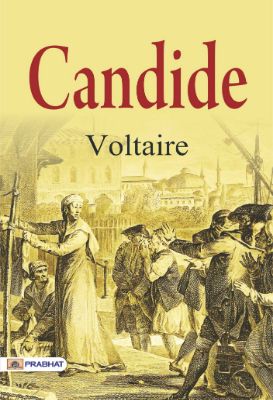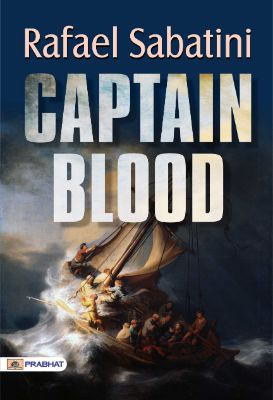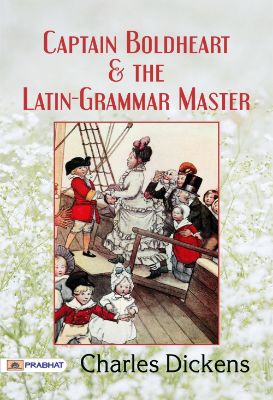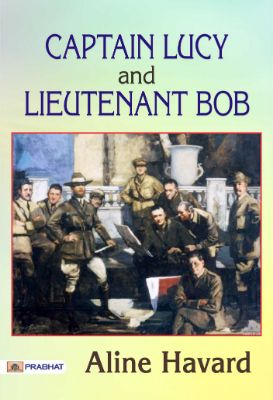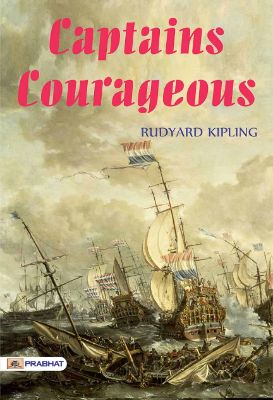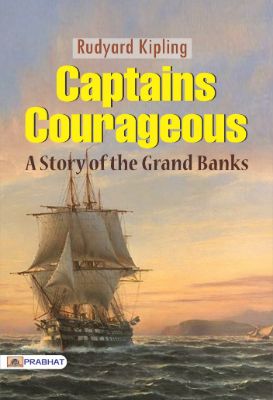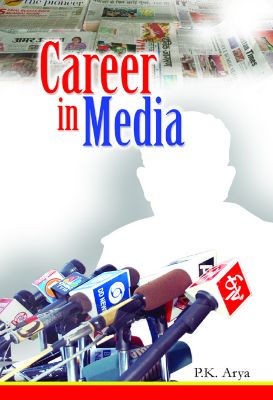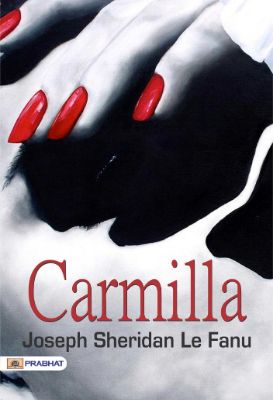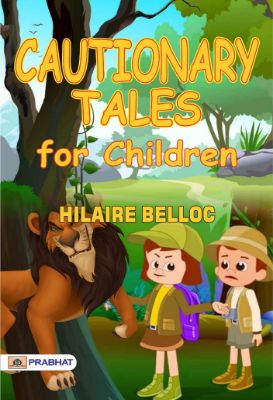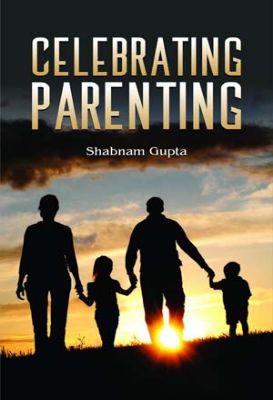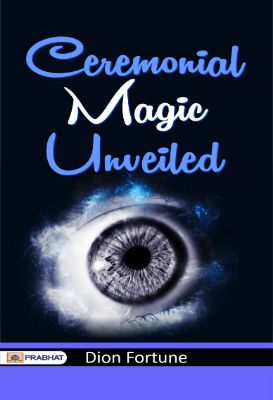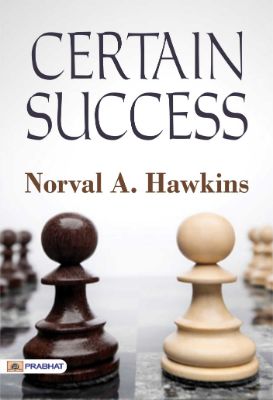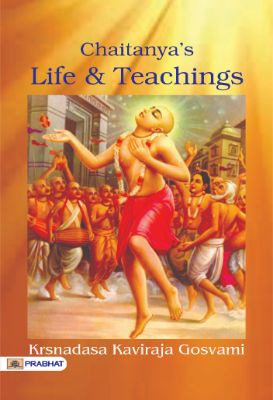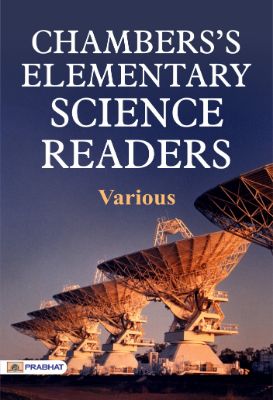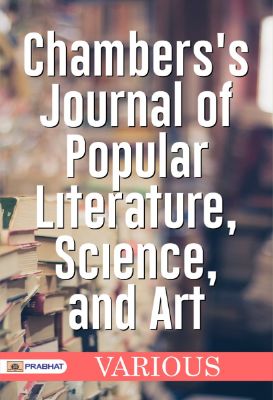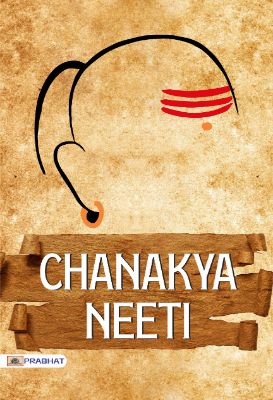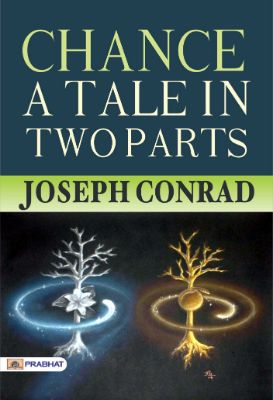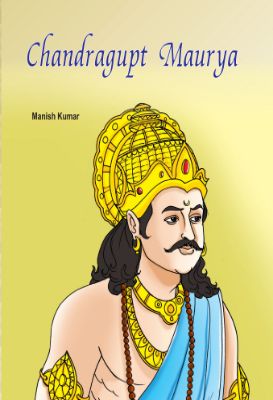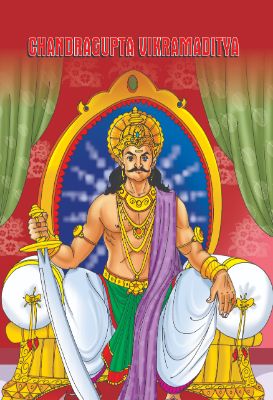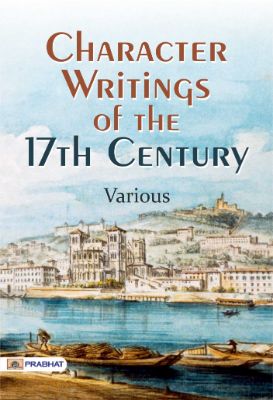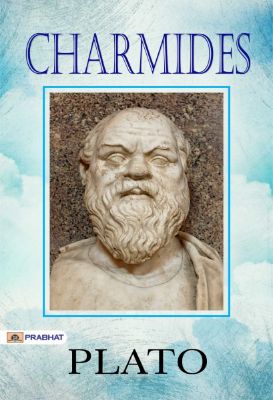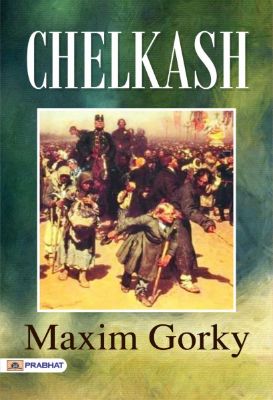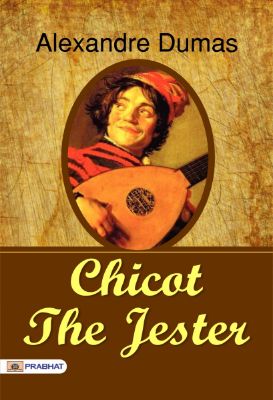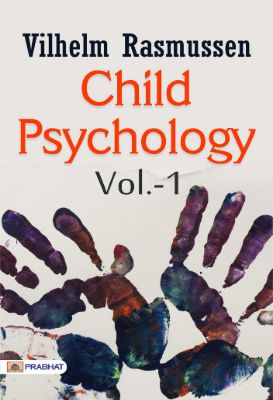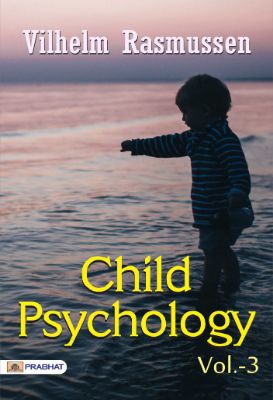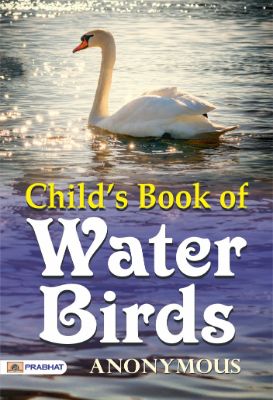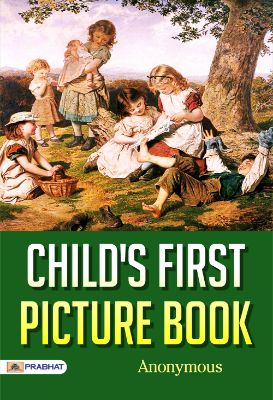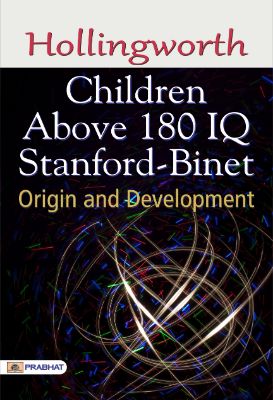Classic Books
Showing 601–650 of 4246 results
Candide by Voltaire
Candide is the story of a gentle man who, though pummeled and slapped in every direction by fate, clings desperately to the belief that he lives in “the best of all possible worlds.” On the surface a witty, bantering tale, this eighteenth-century classic is actually a savage, satiric thrust at the philosophical optimism that proclaims that all disaster and human suffering is part of a benevolent cosmic plan. Fast, funny, often outrageous, the French philosopher’s immortal narrative takes Candide around the world to discover.
Canoeing in the wilderness by Henry David Thoreau
The present book ‘Canoeing in the wilderness’ was written by famous American essayist, poet, philosopher, abolitionist, naturalist, tax resister, development critic, surveyor, and historian – Henry David Thoreau. It was actually a compilation of his essays which he wrote on his trip to canoe wilderness at the age of forty years. It was first published in the year 1906.
Captain Blood by Rafael Sabatini
Peter Blood, bachelor of medicine and several other things besides, smoked a pipe and tended the geraniums boxed on the sill of his window above Water Lane in the town of Bridgewater.
Captain Boldheart & the Latin-Grammar Master by Charles Dickens
Great Stories and poems for children is a collection of most delightful childrens stories.
Captain Cook: His Life, Voyages, and Discoveries by William Henry Giles Kingston
Among all those Englishmen who, from a humble origin, have risen to an honourable position, Captain James Cook is especially worthy of record. His parents were of the peasant class—his father having commenced life as a farm-labourer, and his mother being a cottager’s daughter. Probably, however, they were both superior to others of the same station, as the husband, in process of time, became farm-bailiff to his employer—a Mr Thomas Skottowe. This was about the year 1730, and the farm of which he had the management was called Airy-Holme, near Ayton, in Yorkshire. Not far from this place, at the village of Marton, near Stockton-upon-Tees; his son James was born, on October 27, 1728. James was one of nine children, all of whom he survived, with the exception of a sister who married a fisherman at Redcar.
Captain Lucy and Lieutenant Bob by Aline Havard
Some of the girls who read this first story of Lucy Gordon’s army life have spent their lives on army posts as well as she, and perhaps have even lived on Governor’s Island. A good many others, though, have only visited posts, and have never felt that they knew much about the life of army girls, except that it was full of sudden changes. But in this last year the American army has grown very real and absorbing to every girl in America.
CAPTAINS COURAGEOUS by Rudyard Kipling
Noted children’s fiction writer Rudyard Kipling’s ‘Captains Courageous’ is an 1897 novel. The story follows the adventures of fifteen-year-old Harvey Cheyne Jr., the spoiled son of a railroad tycoon, after he is saved from drowning by a Portuguese fisherman in the north Atlantic.
Captains Courageous: A Story of the Grand Banks by Rudyard Kipling
Rudyard Kipling’s 1897 adventure novel ‘”Captains Courageous”: A Story of the Grand Banks’ follows the adventures of fifteen-year-old Harvey Cheyne Jr., the spoiled son of a railroad tycoon, after he is saved from drowning by a Portuguese fisherman in the north Atlantic.
Career in Media by P K Arya
Generally, a son is expected to follow the same line or profession of his father. For instance, if the father is a doctor, so must the son be one, and if the father is an engineer, the son must become one too. If someone is a family is involved in a business, the family pursues the same generations after generations. But now, in the twenty-first century, many changes have taken place. This is not to deny that forestated norms exist today. Even now, 40 per cent people are in their father’s business or vocation. But the change is significant and the credit for this goes to the media— media in TV—where sky rocketting channels are the main reason behind such a drastic change in career norms.
Careers in Atomic Energy by Loyce J. McIlhenny
Physicians use radiation to treat disease. Mechanical engineers design components for nuclear reactors. Electrical engineers convert the energy of the atom into electricity. Botanists use radioactivity to learn more about plants, and zoologists use it to study animals. Chemists investigate compounds with radioisotopes. Physicists and mathematicians work out the intricate interrelations among the tiny particles of the atom. Agronomists use radioactive materials to improve fertilizers and crops, and nutritionists use them to improve animal diets.
Carmilla by Joseph Sheridan Le Fanu
Carmilla’ is a gothic novel by Joseph Sheridan Le Fanu. It is regarded as one of the early works of vampire fiction and predates Bram Stoker’s ‘Dracula’ by 26 years. First published as a serial in ‘The Dark Blue’ in 1871, the story is narrated by a young woman – Countess Karnstein, who is preyed upon by a female vampire named Carmilla. Carmilla is later revealed to be Mircalla.
Castes In India by Dr. Babasaheb Ambedkar
Ambedkar was born into a poor low Mahar (dalit) caste, who were treated as untouchables and subjected to socio-economic discrimination. Ambedkar’s ancestors had long worked for the army of the British East India Company, and his father served in the British Indian Army at the Mhow cantonment.
Castle Rackrent by Maria Edgeworth
The story of the Edgeworth Family, if it were properly told, should be as long as the ARABIAN NIGHTS themselves; the thousand and one cheerful intelligent members of the circle, the amusing friends and relations, the charming surroundings, the cheerful hospitable home, all go to make up an almost unique history of a county family of great parts and no little character. The Edgeworths were people of good means and position, and their rental, we are told, amounted to nearly L3000 a year. At one time there was some talk of a peerage for Mr. Edgeworth, but he was considered too independent for a peerage.
Castle Richmond by Anthony Trollope
The value of the story is rather documentary than literary. It contains several graphic scenes descriptive of the great Irish famine. Trollope observed carefully, and on the whole impartially, though his powers of discrimination were not quite fine enough to make him an ideal annalist.
Catriona by Robert Louis Stevenson
First published in the year 1893, the present book ‘Catriona’ was written by famous author Robert Louis Stevenson. It is considered to be the author’s sequel to his previous novel ‘Kidnapped which was published in the year 1886.
Cautionary Tales for Children by Hilaire Belloc
First published in the year 1907, Hilaire Belloc’s present book ‘Cautionary Tales for Children’ consists of fully illustrated short stories written primarily for young children.
Cecily Parsley’s Nursery Rhymes by Beatrix Potter
Goosey, goosey, gander,
Whither will you wander?
Upstairs and downstairs,
And in my lady’s chamber!
Celebrating Parenting by Shabanam Gupta
“As a young mother,
I was always overwhelmed. And fearful. I had so many questions, and no answers. Of course, Dr. Benjamin Spock, Adele Faber and
their ilk held my hand for a while, but could not assuage my fears. Not totally. I read the best books on parenting, written by trained child psychologists, Ph.Ds and M.Ds, but they were speaking to the western world. I needed to hear from someone who knew my world, my challenges, my insecurities and my social milieu. I missed having a book by my bedside, which
I could leaf through and
find answers.
This is how this book came about. Hope you find some of your answers here.”
—Shabnam Gupta
Ceremonial Magic Unveiled by Dion Fortune
This article first appeared in the Occult Gazette in January 1933 and has not been available for a wider audience since. It is of particular relevance in revealing Dion Fortune’s considered opinion about The Golden Dawn as well as Aleister Crowley.
Certain Success by Norval A. Hawkins
In Certain Success, Narval A. Hawkins has tried to gives an outline of the whole subject of salesmanship. But the scope of this set does not afford room to give here a minutely detailed exposition of the special processes of making sales in particular businesses. I have compiled for you, rather, the general principles of effective selling that may be universally applied. Certain success is a handbook of fundamental ideas, which each reader, by his individual thinking, should amplify and fit to his+her own work or ambition.
Chad Hurley by Kalyani Mookherji
Born as Chad Meredith Hurley on January 24, 1977 in Reading, Pennsylvania, the future internet sensation was the third child of Don and Joann Hurley. Chad grew up with an older sister and brother and proved his mettle practically in every sphere of activity.
Chaitanya’s Life and Teachings by Krsnadasa Kaviraja Gosvami
Chaitanya’s life and teachings’ (original title – Sri Chaitanya-charitamrita) is the main work on the life and teachings of Sri Chaitanya Mahaprabhu, the incarnation of Krishna who appeared in India five hundred years ago. Lord Chaitanya introduced the chanting of the holy names of God as the prescribed method of God-realization for our time. He began what is today called the Hare Krishna movement, since the movement’s founder, Srila Prabhupada, comes in the Chaitanya line of spiritual masters.
Chamber Music by James Joyce
First published in the year 1907, the present book titled ‘Chamber Music’ is a collection of poems penned by James Joyce. The collection originally comprised thirty-four love poems, but two further poems were added before publication.
Chambers’s Elementary Science Readers by Various
1. Pussy came walking along the garden-path. Harry watched her, and saw that she did not like the damp ground.
2. She jumped over the pools, and then began to run, shaking her paws as she got to the house.
3. ‘Now, a dog does not mind wet feet,’ Harry thought; ‘he will go into the water, but Pussy will never go into the water.
4. ‘She does not even use water to wash herself. Come here, Pussy! You don’t like to wet your nice fur, do you?’
5. As Harry was always kind to pussy, she let him pick her up and carry her into the house.
Chambers’s Journal of Popular Literature, Science, and Art by Various
THE pleasures of social intercourse are amongst the best and truest enjoyments in which we can participate—the desire for the friendship of others is more or less inherent in human nature. There are nevertheless thousands upon thousands who are surrounded by every opportunity for realising these pleasures, and who yet fail to benefit by their influence, either for temporary and healthy pastime, or for permanent good. Most people have doubtless many amongst their circle of acquaintance who are easily distinguished from others by the term ‘unsociable.’ It would, however, be both unfair and incorrect to estimate that a large proportion of a given number of people have a decided objection to and shun all society. The habitually unsociable people are frequently those who would readily confess to a liking for society, but who do not enter into it on account of the various and numerous obstacles which, they will tell you, are in the way. It is not so much on account of an innate and acknowledged indisposition for social intercourse that the saying, ‘Some folk are as unsociable as milestones,’ is proverbially correct, as that many barriers have been erected by the suspicious imaginations of those concerned. People are often heard to complain of the unsociability of others; but it is not unseldom that the very people who adopt this standpoint are those who, at the least approach from others, retire almost entirely within their insignificant individuality, and assume a reserve of manner and constrained mode of conversation, that of itself forbids any attempt to cultivate their acquaintance. Something like a hedgehog which, should you happen to catch sight of it, instead of making friends, rolls itself up into a ball, and shews off its bristles to the best advantage.
Chanakya Neeti by R.P. Jain
Chanakya was an Indian teacher, philosopher and royal advisor. He managed the first Maurya emperor Chandragupta’s rise to power at a young age. He is widely credited for having played an important role in the establishment of the Maurya Empire, which was the first empire in archaeologically recorded history to rule most of the Indian subcontinent.
Chanakya is traditionally identified as Kautilya or Vishnu Gupta, who authored the ancient Indian poltical treatise called Arthasastra. As such, he is considered as the pioneer of the field of economics and political science in India, and his work is thought of as an important precursor to Classical Economics.
Chanakya Neeti is a treatise on the ideal way of life, and shows Chanakya’s deep study of the Indian way of life. Chanakya also developed Neeti-Sutras (aphorisms—pithy sentences) that tell people how they should behave. Of these well-known 455 sutras, about 216 refer to rajaneeti (the do,s and don’ts of running a kingdom). Apparently, Chanakya used these sutras to groom Chandragupta and other selected disciples in the art of ruling a kingdom.
SOME IMPORTANT SUTRAS
In the common man’s affluence and happiness is the affluence and happiness of the king. In their welfare is the king’s welfare.
The king’s mission should be to constantly make efforts for the welfare of his subjects. It is his duty to maintain orderly administration.
Self-dependent economy is the best economy; it should not be entirely dependent on exports.
Everyone in the society should be equal with equal opportunities.
It is necessary to have an effective land management policy for the development of the resources.
The State should keep a constant watch on the agricultural development.
The law of the land should be uniform for everyone.
The security of its residents should be a priority for the government.
Chance A Tale in Two Parts by Joseph Conrad
Chance is narrated by Conrad’s regular narrator, Charles Marlow, but is characterised by a complex, nested narrative in which different narrators take up the story at different points and attempt to interpret various episodes in the life of Miss de Barral, the daughter of a convicted swindler named Smith de Barral. Miss de Barral leads a sheltered life while her father is prosperous, then must rely on the generosity of others, who resent her or have agendas for her, before she escapes by marrying one Captain Anthony. Much of the book involves the musing of the various narrators over what she and the Captain expected from this union, and what they actually got from it.
Chandragupta Maurya by Manish Kumar
Chandragupta Maurya, the founder of Maurya dynasty , was the first emperor in the Indian histor y who is behind the political, economic and cultural unification of our countr y . He was born in 340 BCE.
Nothing can be said decisively about his parents. According to some scholars, he was the stepson of Nanda, the king of Magadha. His mothe , Mura, was a slave girl.
Chandragupta Vikramaditya by Sumit Kumar
In the first centur y before Christ, the Saka kings were prominent in western India. They were brave warriors. Their growing supremacy was checked by the Gupta King, Chandragupta Vikramaditya. At the same time , he had protected the nation against the foreign in vasions. Therefore, he is also known as ‘Sakari’ (the enemy of Sakas). It was due to this significant work that he assumed the title of ‘Vikramaditya’. He is also known as Chandragupta II.
Chandrakanta by Devaki Nandan Khatri
Chandrakanta’ is Devkinandan Khatri’s novel which is considered to be the first prose work in the modern Hindi language. This novel got popular to the extend that there came a TV serial based on it, with the same name. The story is a romantic fantasy about the prince and princess – Virendra Singh and Chandrakanta – of two rival kingdoms, with a lot of magic in it.
Chandrashekhar Azad by Meenu Sinhal
Chandrashekhar Azad, the great revolutionar y of India, was born on 23rd July , 1906 in Bhawra village of Alirajpur , a princely state in Madhya Pradesh. His father’s name was Shri Sitaram Tiwari and mother’s name was Smt. Jagrani Devi. Three sons were born to them before Azad’s birth, but only one son named Sukhdev sur vived. Azad’s parents were very happy with the child’s arrival but were worried because he was very frail at the time of his birth.
Chapters from My Autobiography by Mark Twain
Samuel Clemens (Mark Twain) began writing his autobiography long before the 1906 publications of these Chapters from my Autobiography. He originally planned to have his memoirs published only after his death but realized, once he’d passed his 70th year, that a lot of the material might be OK to publish before his departure. These chapters were published in serial form in the North American Review during 1906-1907. While much of the material consists of stories about the people, places and incidents of his long life, there’re also several sections from his daughter, which he calls “Susy’s biography of me”.
Character Writings of the 17th Century by Various
Character Writings of the 17th Century is presented here in a high quality edition. This popular classic work by Various is in the English language, and may not include graphics or images from the original edition. If you enjoy the works of Various then we highly recommend this publication for your book collection.
Charles Baudelaire by Arthur Symons
Les Fleurs du mal’ (1861) was the first great modern work of poetry and one of the few books of poems to become an international bestseller. This edition contains all of Baudelaire’s poetry in verse with Francis Scarfe’s scrupulous and inventive prose translations at the foot of the pages. Together with his detailed and authoritative introduction, this presentation makes an ideal edition both for the student and for the general reader who wishes to tackle the French original with a reliable prose guide at hand.
Charmides by Plato
The Text which has been mostly followed in this Translation of Plato is the latest 8vo. edition of Stallbaum; the principal deviations are noted at the bottom of the page.
I have to acknowledge many obligations to old friends and pupils. These are:—Mr. John Purves, Fellow of Balliol College, with whom I have revised about half of the entire Translation; the Rev. Professor Campbell, of St. Andrews, who has helped me in the revision of several parts of the work, especially of the Theaetetus, Sophist, and Politicus; Mr. Robinson Ellis, Fellow of Trinity College, and Mr. Alfred Robinson, Fellow of New College, who read with me the Cratylus and the Gorgias; Mr. Paravicini, Student of Christ Church, who assisted me in the Symposium; Mr. Raper, Fellow of Queen’s College, Mr. Monro, Fellow of Oriel College, and Mr. Shadwell, Student of Christ Church, who gave me similar assistance in the Laws. Dr. Greenhill, of Hastings, has also kindly sent me remarks on the physiological part of the Timaeus, which I have inserted as corrections under the head of errata at the end of the Introduction. The degree of accuracy which I have been enabled to attain is in great measure due to these gentlemen, and I heartily thank them for the pains and time which they have bestowed on my work.
Chats on Old Earthenware by Arthur Hayden
Five years have now elapsed since the publication of my volume, “Chats on English China,” and in the interval a great number of readers have written to me suggesting that I should write a companion volume dealing with old English earthenware. It is my hope that this complementary volume will prove of equal value to that large class of collectors who desire to know more about their hobby but are fearful to pursue the subject further without special guidance.
It is a matter for congratulation in these days, when so many books have only a short life for one season, to know that, owing to the enterprise of my publisher in making the “Chats” Series for collectors so widely known, the volume dealing with old English China still retains its vitality, and holds its place as a popular guide to collecting with profit.
Cheerfulness as A Life Power by Orison Swett Marden
The soul-consuming and friction-wearing tendency of this hurrying, grasping, competing age is the excuse for this little book. Cheerfulness has a wonderful lubricating power. What is needed is a habit of cheerfulness, to enjoy every day as we go along; not to fret and stew all the week, and then expect to make up for it Sunday or on some holiday. This book leads the reader to look on the sunny side of things, and to take a little time every day to speak pleasant words.
Chelkash by Maxim Gorky
The blue southern sky was bedimmed by the dust rising from the haven; the burning sun looked dully down into the greenish sea as if through a thin grey veil. It could not reflect itself in the water, which indeed was cut up by the strokes of oars and the furrows made by steam-screws and the sharp keels of Turkish feluccas and other sailing vessels, ploughing up in every direction the crowded harbour in which the free billows of the sea were confined within fetters of granite and crushed beneath the huge weights gliding over their crests, though they beat against the sides of the ships, beat against the shore, beat themselves into raging foam—foam begrimed by all sorts of floating rubbish.
Chemistry Quiz Book by Mrinal Talukdar
Chemistry seemingly is a part of science that we do not encounter in our normal life. On the contrary, Chemistry is that branch of science which is inherently linked to our everyday existences.
‘Chemistry Quiz Book’ is an endeavour to delve deep into the abyss that Chemistry appears to be. Useful for aspiring students, as well as for general learners who are curious to learn the ways of chemistry, this book is an attempt to provide information about the said discipline in a cohesive and comprehensible manner, as the questions are categorized under different topics.
The quiz in the form of MCQs will give any amateur in science the confidence and motivation to explore more advanced concepts and help build a solid foundation for Chemistry as a science category.
Chicot the Jester by Alexandre Dumas
La Dame de Monsoreau is a historical novel by Alexandre Dumas, père published in 1846. It owes its name to the counts who owned the famous château de Montsoreau.
Child psychology Vol-1 by Vilhelm Rasmussen
The sub-title of this book is in reality illogical, for the two children who have been especially studied and who are the subject of this book, have not attended a kindergarten for any considerable period. A trial was made with the eldest child, R., when she was four years and five months old, but unsuccessfully. Before the event R. was greatly excited at the thought of playing with so many other children, and accompanied her mother expectantly. But upon her return home it was obvious that she had been disappointed, and, contrary to custom, she said very little about her experiences. “We built a house with a big door,” and “The mistress sang about a bird that flew,” was all she had to report.
Desiring to form an estimate of the kindergarten, I went there one day, and, I must admit, was not favourably impressed. The mistress did not possess the necessary qualifications for her position; and as R. with good reason found the proceedings wearisome, she was, after about a month’s trial, taken away again.
Child psychology Vol-2 by Vilhelm Rasmussen
The sub-title of this book is in reality illogical, for the two children who have been especially studied and who are the subject of this book, have not attended a kindergarten for any considerable period. A trial was made with the eldest child, R., when she was four years and five months old, but unsuccessfully. Before the event R. was greatly excited at the thought of playing with so many other children, and accompanied her mother expectantly. But upon her return home it was obvious that she had been disappointed, and, contrary to custom, she said very little about her experiences. “We built a house with a big door,” and “The mistress sang about a bird that flew,” was all she had to report.
Desiring to form an estimate of the kindergarten, I went there one day, and, I must admit, was not favourably impressed. The mistress did not possess the necessary qualifications for her position; and as R. with good reason found the proceedings wearisome, she was, after about a month’s trial, taken away again.
Child psychology Vol-3 by Vilhelm Rasmussen
When in constant intercourse with children in their everyday life we are in a position to obtain a far better insight into their thought-processes and their general psychological condition than can be arrived at by means of tests; for both when the child is occupied playing with its toys and in general conversation we very often find remarkable instances of thought-activity, extending even to the criticism of others. In Child Psychology, I. p. 117 ff., I have quoted a number of examples of early criticism and doubt; and being as I am of the opinion that the critical sense is of extremely high value, and should therefore be carefully cultivated in education, I have been particularly on the alert to remark any evidence of the same in the case of R. or S.
When R. was four years and three months old she saw four portraits in a book and said: “There are three.” I corrected her, saying: “No, there are four;” whereupon R. continued: “But when one was gone there were three.” She could in other words subtract one from four.
Child Verse Poems Grave & Gay by John B. Tabb
Some of these verses have appeared in other places: one in St. Nicholas, one in Harper’s Young People; and the Sunday School Times, the Youth’s Companion, and the Independent have each published others. To this class belong, I think, all I reprint from my Poems and Lyrics. Most of the contents, however, is new.
Child’s Book of Water Birds by Anonymous
This book is very useful for children and is beneficial in the development of children because the best category of pictures and poetry is included in the books. And the curriculum of these books has been given in a way that helps in the development of children.
Child’s First Picture Book by Anonymous
Great Stories and poems for children is a collection of most delightful childrens stories.
Childe Harold’s Pilgrimage by Baron George Gordon Byron Byron
Written in four parts, a lengthy poem which fits the usual style of many of the romantic poets, widely appriciated British poet Baron George Gordon Byron’s ‘Childe Harold’s Pilgrimage’ was first published in 1810s. As the following lines in the poem are “To those who gaze on thee, what language could they speak?”, it is an expression of the melancholy and disillusionment felt by a generation weary of the wars of the post-Revolutionary and Napoleonic eras.
Childhood by Leo Tolstoy
Leo Tolstoy began his trilogy, Childhood, Boyhood, Youth, in his early twenties. Although he would in his old age famously dismiss it as an ‘awkward mixture of fact and fiction’, generations of readers have not agreed, finding the novel to be a charming and insightful portrait of inner growth against the background of a world limned with extraordinary clarity, grace and color. Evident too in its brilliant account of a young person’s emerging awareness of the world and of his place within it are many of the stances, techniques and themes that would come to full flower in the immortal War and Peace and Anna Karenina, and in the other great works of Tolstoy’s maturity.
Childhood of Kalam by Srijan Pal Singh
Greatness is not by accident.
Greatness is a quality processed, honed and learnt over a lifetime of learning and hard work. Great human beings are built when a curious mind is met with life changing lessons, often early in the childhood. Just like the nature and quality of a tree is decided by the characteristic of the seed and how it is sown, the worth of a human life is shaped in the early stage of childhood.
Often these life teachings as a growing up child, transform into the values which set the boundaries of one’s adult actions and govern one’s decisions.
We all know Dr. Kalam as an eminent teacher, an excellent President, an exception scientist, a talented rocket scientist, a team man, an institution builder and a man of ethics and integrity. But what went behind the scenes, in the formative days of “Little Kalam” which shaped him slowly but surely into Dr. Kalam – the man we remember and admire.
This books aspires to take you in this early history of childhood of Kalam tracking “Little Kalam” as he begins his first steps into the sands of Rameshwaram – which one day will translate into a march to the Rashtrapati Bhawan.
Children Above 180 IQ Stanford-Binet: Origin and Development by Hollingworth
Shortly after the year 1924 Leta S. Hollingworth prepared a manuscript on “Children above 180 IQ (Stanford-Binet)” in which she surveyed the material on the topic available up to that date and added accounts of five cases which she had studied individually. As the years went by she held back the manuscript from publication and one by one she found seven more cases to be included in her list. At the time of her death in 1939 she had begun to revise this manuscript, bringing the survey up to date and adding the new cases. The present book gives as much of this revision from her own hand as is available. The Preface and Chapters 1, 2, and 3 are as she wrote them. The accounts of the first five cases are given just as she originally wrote them up, but to them “editorial supplements” have been added in which an endeavor has been made to present for each case such data as have been found in her files, with little in the way of discussion or interpretation.


